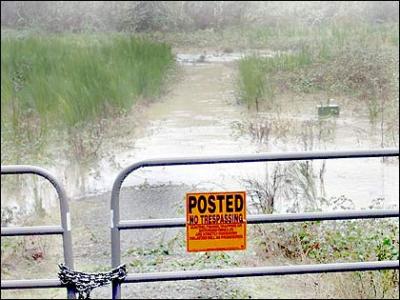
Images of flooded homes and fields filled the news during the mid-January floods this year. Lane County has been soliciting information from homeowners on how much damage the high waters cost them in order to apply for federal disaster relief funds. So LandWatch Lane County wants to know why the county would consider allowing even more houses in areas prone to flooding.
Robert Emmons, president of LandWatch Lane County, has previously urged the Land Management Division (LMD) to deny the “template dwelling” requests on about 80 acres near to Siuslaw Road and Territorial Highway near the Lorane General Store and Deli. The land used to be a beet field.
Emmons had been informed by Lorane residents that this land floods in high-water years, probably about twice every 10 years. However, LandWatch says that despite this information LMD approved at least 15 template dwelling requests for the farmland. A template dwelling is basically when the construction of a home is permitted on what it otherwise a rural tract, often forestland. Opponents say template dwellings promote urban sprawl onto farms and other rural lands.
Approving the placement of houses in floodplains “sets people up for grief,” Nena Lovinger of LandWatch says. “It is expensive and wasteful in many ways, including dashed hopes, lost houses and huge insurance costs,” she adds
Kent Howe, planning director for Lane County, responded to LandWatch’s concerns via email, saying “as you know, the development policies at the (federal), state and county levels do not prohibit development in the floodplain areas.” He writes that while structural development is not recommended in these flood hazard areas, these particular lands have portions that are considered developable, though they would need to follow code requirements that the first floor is “2 feet above grade to protect the structure.”
Lovinger and LandWatch are also concerned about the effect on water that building homes on and putting their septic tanks into lands prone to flooding might have on Lane County’s clean water.
“Serious negative impacts to countless life forms that depend on healthy waterways are a sad end result,” Lovinger says.
When presented with the information, Commissioner Rob Handy asked, “What can we do at Lane County LMD to better protect these communities?” He says, “It appears the risks are only increasing. Decisions being made at LMD are rife with exceptions and exemptions that are putting septic tanks in floodplains.” He says the floods are affecting wells and other drinking water sources, and in some instances drinking water sources are getting mixed with septic waste.
Handy says he expects the LMD 2012 Workplan, which might address these issues, will be appearing on an upcoming commission agenda.